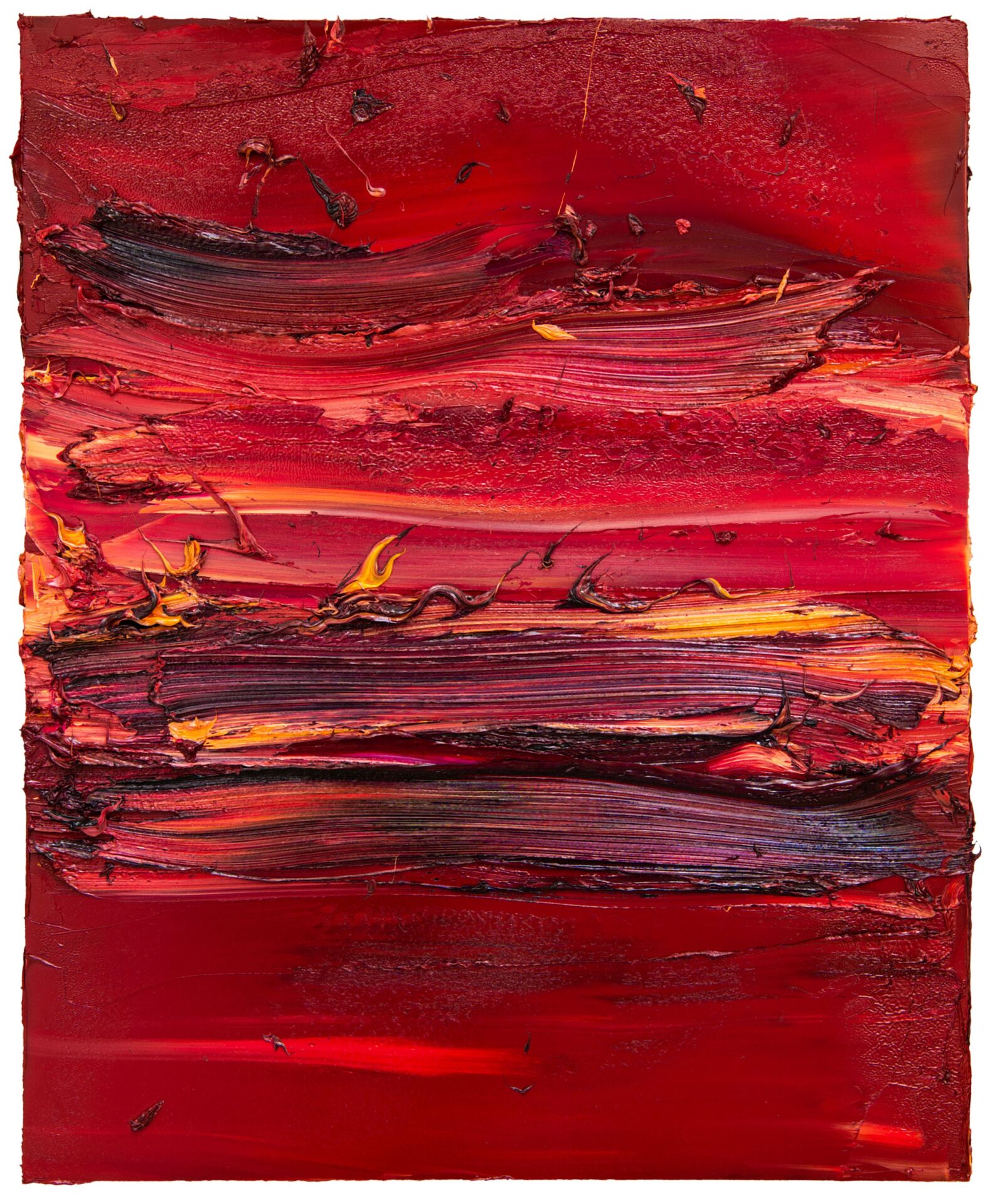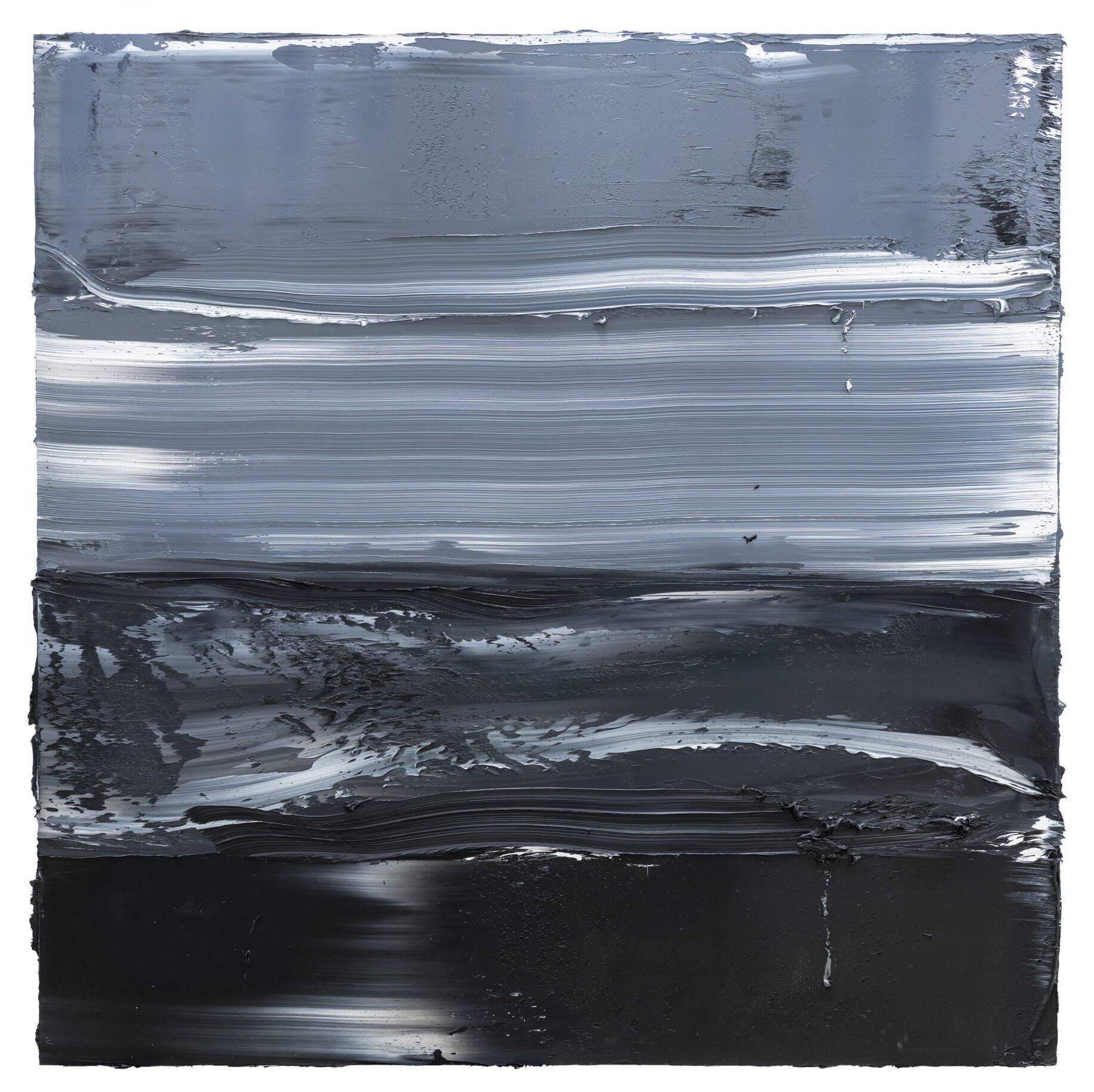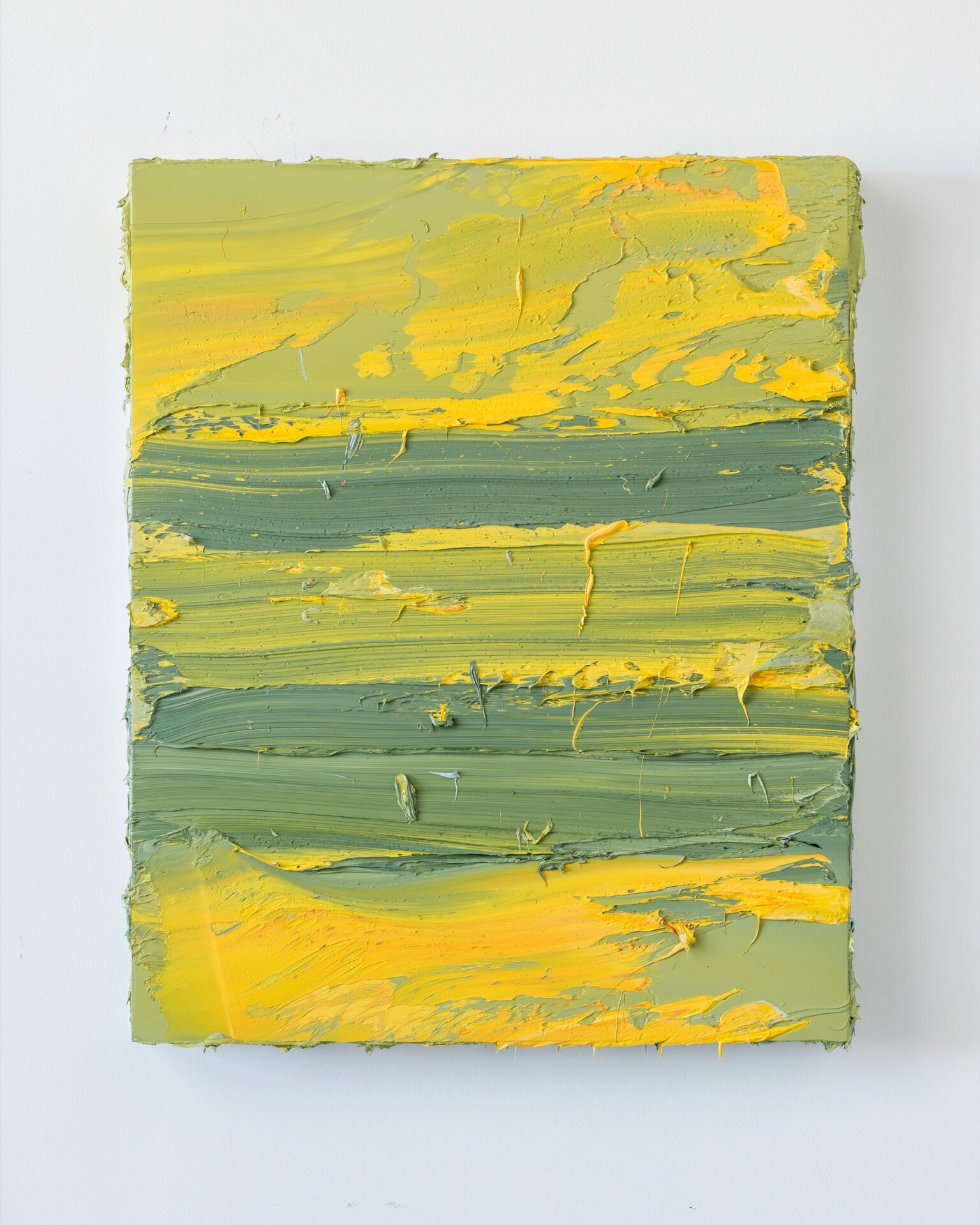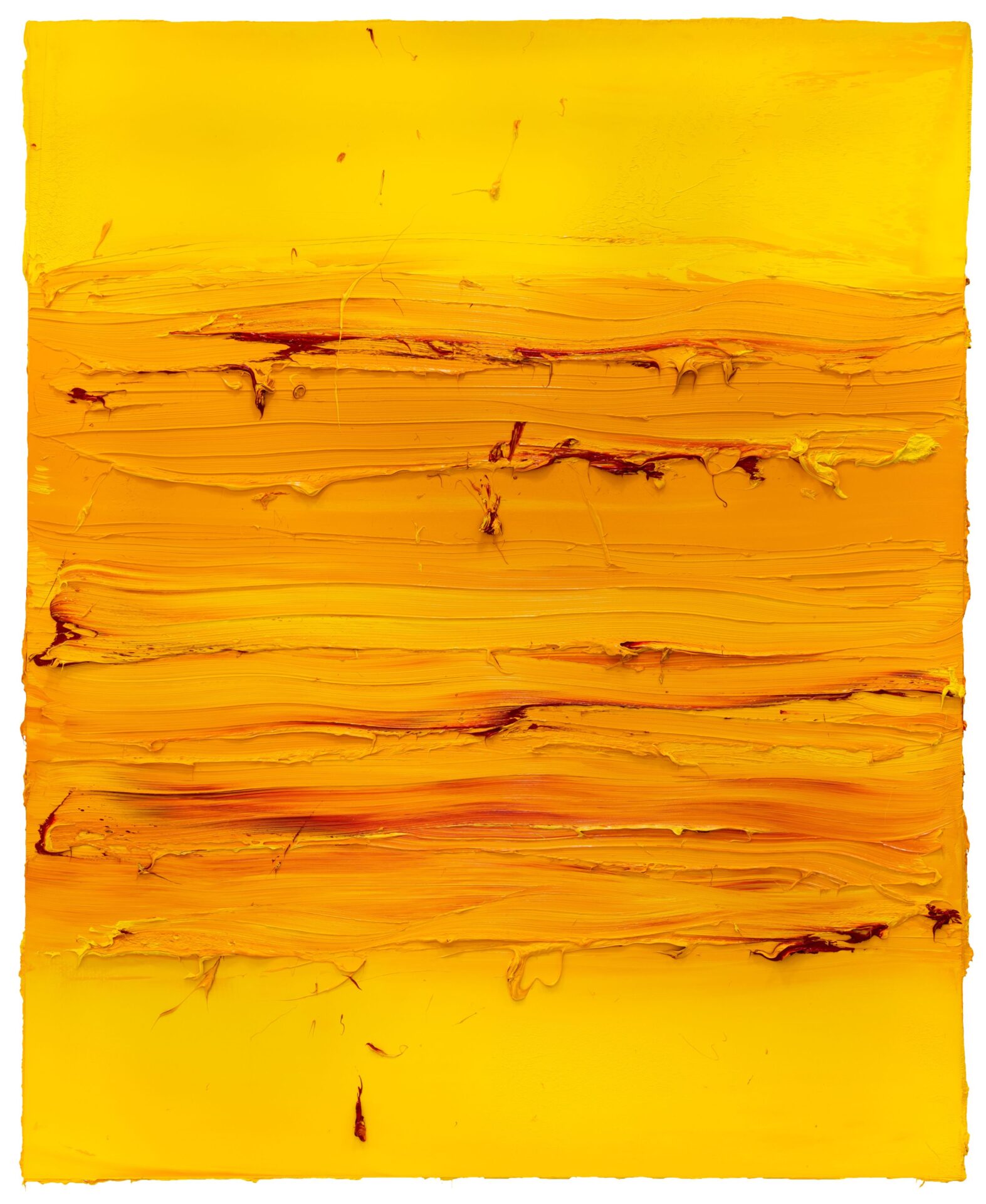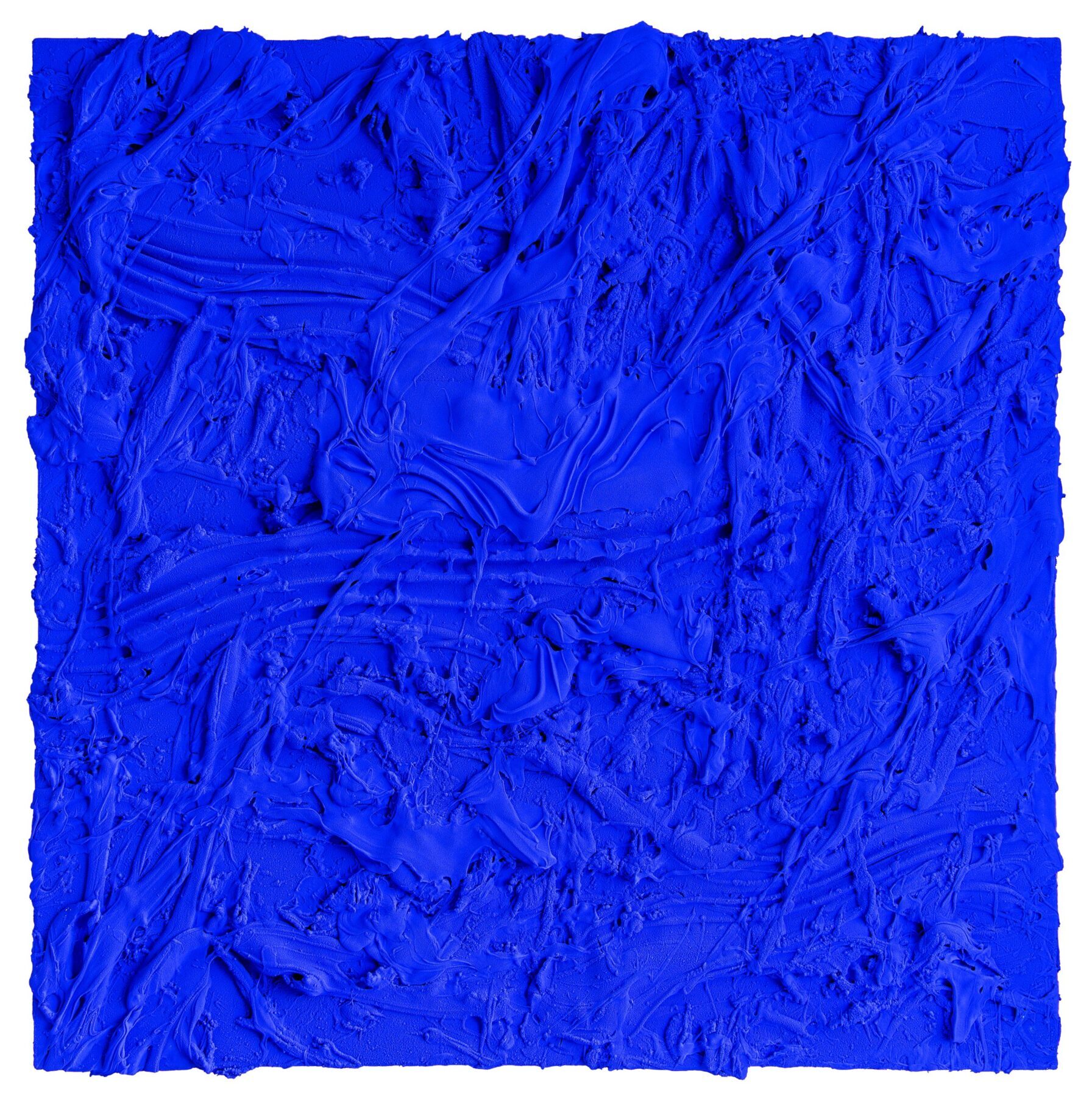Jason Martin’s work is characterised by being halfway between painting and sculpture. Martin studied at the Chelsea College of Art and Goldsmiths College in the early nineties. His work came to the attention of a wide audience when it was included in the 1997 exhibition “Sensation: Young British Artists from the Saatchi Collection” held at the Royal Academy of Arts in London, which also included other artists such as Damien Hirst, Mat Collishaw, Jake and Dinos Chapman, Rachel Whiteread and Yinka Shonibare. His monochrome works in which he explores different surface textures have been seen in exhibitions in cities such as London, Venice, Malaga and Palma de Mallorca. He currently lives and works between London and Lisbon.
Martin produces organic shapes with a mechanical technique using precise movements of his brush. These brushes are created by the artist himself and with them he achieves a clearly recognisable style characterised by hypnotic and meditative waves of paint and colour. He selects the quality and density of the bristles so that creating his tools is part of the process of creating his work. Like the sand rakes of Japanese Zen gardens, the implicit repetition of movement is hypnotic, simultaneously healing and agitating.
His work invites immersion, although, unlike the abstract expressionists of the 1950s, he is not aiming to give the viewer a metaphysical experience. We find ourselves in the presence of an artist who enjoys painting, who knows how to squeeze all the energy out of it in monochromatic works, but with a whole series of textures that invite the viewer to travel through them, to become immersed in these sinuous forms halfway between abstraction and figuration because although, at first sight, they seem to be a mass of uniform colour, when we enter into them, we glimpse clearly recognisable forms that connect directly with our subconscious.
As Ann Hindry explains, “Martin is interested in the immediacy of perceptual experience that is specific to painting, consciously exploring its implications, while resolutely maintaining it in working with the subjects. He achieves the feat of producing a painting that is eminently physical and yet absolutely visual, optical “1.
The Hortensia Herrero collection presents five works by Jason Martin in which we can find those vibrant colours and textures that are so characteristic of his work.
